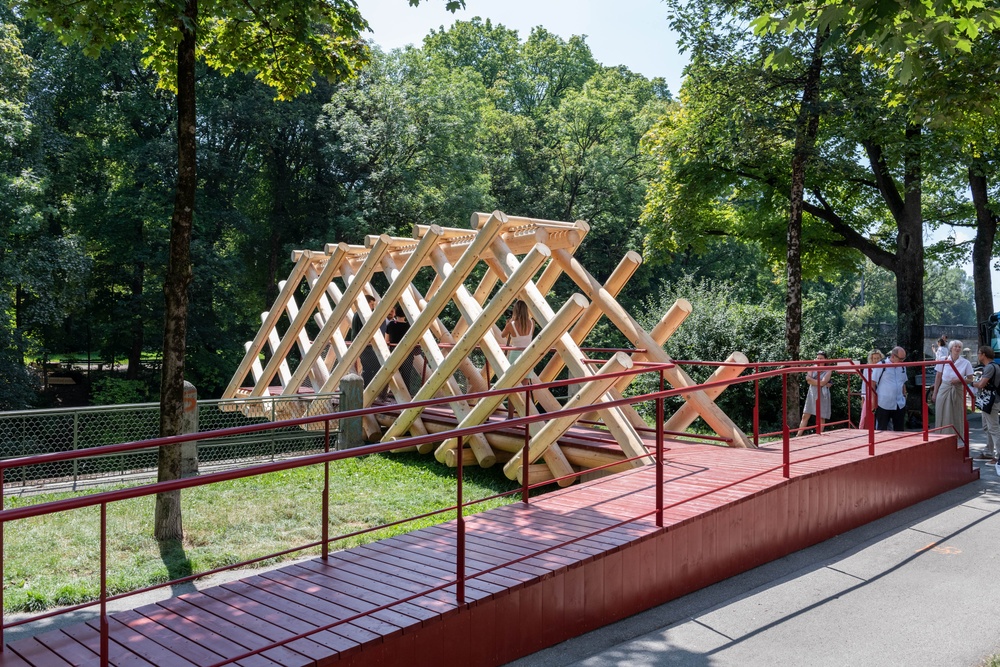Bridge Sprout - a new view of the Isar
The people of Munich love their Isar -- the cool, flowing center of the city. Whether barbecuing at the Flaucher, swimming at the Weideninsel or surfing on the Eisbach wave, this is where life happens. Atelier Bow-Wow, one of the most renowned Japanese architecture firms, has made this unique urban space in Munich the starting point for an artistic intervention in the city. With the help of a wooden bridgehead, the Bridge Sprout, you can now look out over the Isar at Schwindinsel and take in a whole new perspective.
In order to give Munich residents a new experience in public space, the "Brücken Spross" (Bridge Sprout) will project over the Isar opposite one of the Schwindinsel islands from July 31 until the end of 2020. The wooden bridgehead does not reach the other bank of the river island, but breaks off abruptly halfway across. On the island, where the bridge should actually emerge, the conceptual line is continued in the form of a wooden platform, which is carefully and respectfully integrated into the Schwindinsel nature reserve.
 © Christoph Knoch
© Christoph Knoch
The thick wooden beams, reminiscent of traditional wooden bridges in the Alps, come together to form a graceful installation. This makes it possible to experience the airspace between the west bank and Schwindinsel in a completely new way. Atelier Bow-Wow refers to the tradition of rafting in Munich and picks up on the old symbiosis between the river Isar and the material wood. In addition, the seemingly unfinished bridge is reminiscent of a ruin that cannot fulfill the desire to reach the other bank. The architects have succeeded in creating space and new experiences of space through the unusual, free-floating bridge section.
The project was made possible by a new format for art in public space in Munich, in which an art project in public space with a budget of 250,000 euros was to be realized free of competitive pressure. The "Bridge Sprout" was selected from a number of international proposals and realized in collaboration with the Department of Culture and the Munich architect Hannes Rössler.

